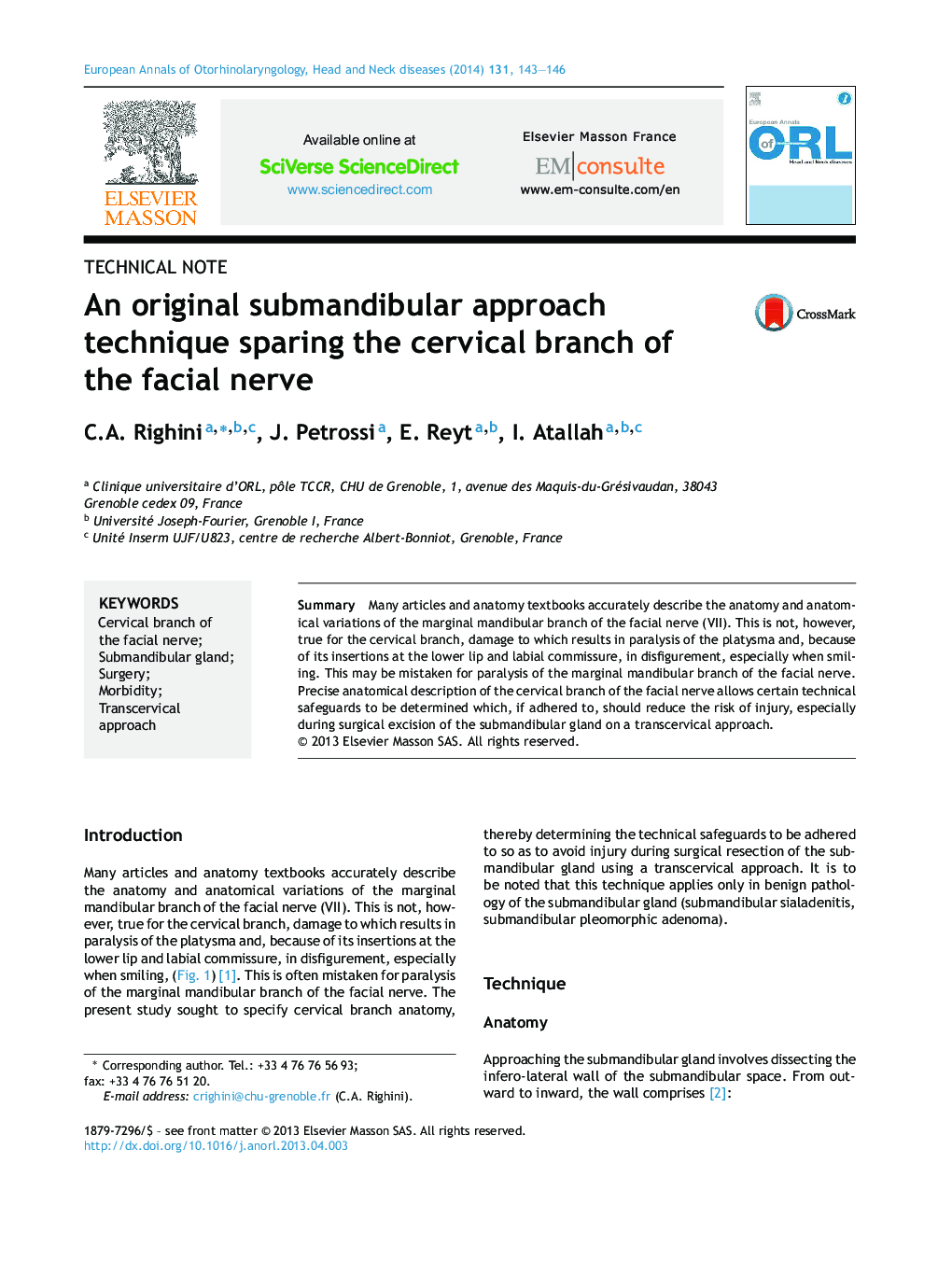| Article ID | Journal | Published Year | Pages | File Type |
|---|---|---|---|---|
| 4110033 | European Annals of Otorhinolaryngology, Head and Neck Diseases | 2014 | 4 Pages |
Abstract
SummaryMany articles and anatomy textbooks accurately describe the anatomy and anatomical variations of the marginal mandibular branch of the facial nerve (VII). This is not, however, true for the cervical branch, damage to which results in paralysis of the platysma and, because of its insertions at the lower lip and labial commissure, in disfigurement, especially when smiling. This may be mistaken for paralysis of the marginal mandibular branch of the facial nerve. Precise anatomical description of the cervical branch of the facial nerve allows certain technical safeguards to be determined which, if adhered to, should reduce the risk of injury, especially during surgical excision of the submandibular gland on a transcervical approach.
Related Topics
Health Sciences
Medicine and Dentistry
Otorhinolaryngology and Facial Plastic Surgery
Authors
C.A. Righini, J. Petrossi, E. Reyt, I. Atallah,
